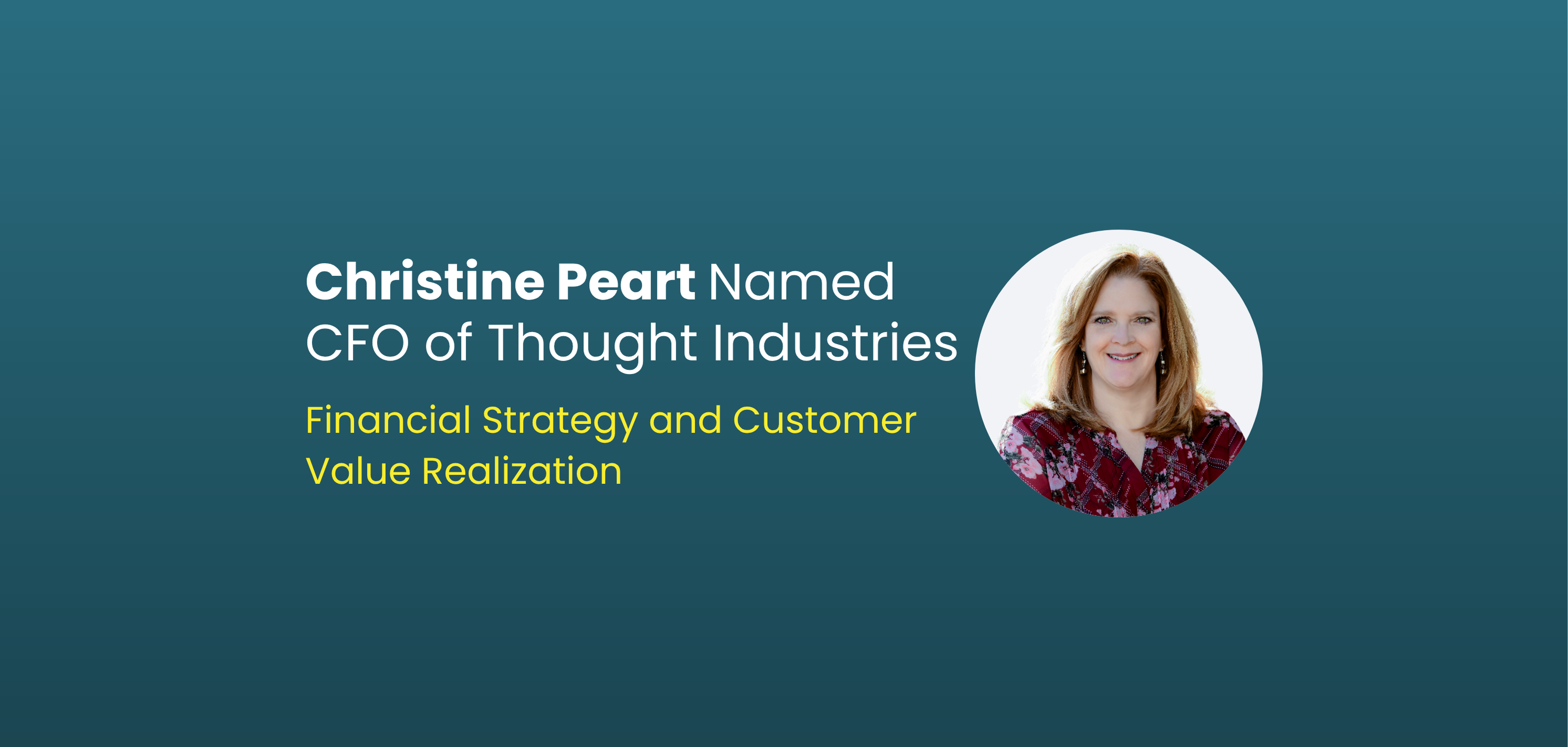I hope you were able to join my COGNITION22 keynote session this morning, Best in Class: Optimizing Reach & Profitability in Enterprise Learning. If you attended, you probably already know how passionate I am about enterprise learning. As learning professionals, I think we love to focus on the learning experience itself. While creating engaging and effective content is key to success, I hope today’s session conveyed the importance of two other major ingredients to growth: boosting profitability and reaching a wider audience.
When I think about how to grow a learning program, I start with these same components. How are you getting your program in front of your audience? How have you tried to increase the volume of that audience? And, how are you currently packaging your learning so that your customers see the value of engaging with it.
We’re lucky at Thought Industries to do quite a bit of our own research – and what we’ve found in our conversations with high-performing learning businesses is that they’re not only strategizing to grow the number of engaged customers, they’re also thinking about the best ways to optimize their pricing model to get the most bang for their buck… and in return, they’re seeing gains in headcount and budget.
In my session, I went over 8 key strategies we saw best-in-class organizations take to drive reach and profitability in their learning programs. Let’s take a brief look at each of them:
8 Reach & Profitability Strategies from Best-in-Class Learning Organizations
1. Develop a Measurement Strategy
In order to effectively improve your reach and profitability, you have to measure it. We saw high-performing organizations analyze reach across multiple dimensions: breadth (% of all accounts trained), depth (% of trained individuals in one account), and volume (how much content each customer consumes).
2. Make Content More Discoverable
It’s absolutely critical that your learning content is easy to find, and this starts with optimizing for search. This means you’ll need to think like content marketers: pinpoint keywords that match the learner’s intent, use heading tags and meta descriptions, link to other sites and pages, etc. And remember, not everyone likes to learn in the same way. Consider many different modalities, such as blended learning packages, workshops, videos, roundtables, or others.
3. Answer the “So What?”
Communicating the “why” behind your learning product is key for high engagement and participation. So, how can you communicate the value of training to customers? And, how are you ensuring your product follows through on this promise? The value proposition really needs to be front and center in the learning experience, with clear positive outcomes you can achieve by completing the course. Experiment with how to do this with your particular program; quick intro videos, clear titles and descriptions, etc. Whatever you do, make it easy for customers to see why they should stay engaged.
4. Orchestrate a Learning Journey
A key principle we saw consistently in great learning organizations was around clarity: never leave learners guessing what to learn next. One common tactic is to link one learning piece to another with a clear call to action (CTA). These help to bridge components together and nurture customers along a cohesive journey. Another play we’ve seen is creating a time-bound learning journey – using a marketing automation tool to invite customers into training at key moments. With this method, toward the end of a customer’s contract, you might automatically invite them to a personalized training experience to ensure they’re getting maximum value… and boost their odds of renewing.
5. Adopt a “Whole-of-Org” Learning Strategy
The best learning organizations we interviewed were actively seeking out partnerships with other departments to drive up overall engagement. Given the capacity constraints of so many training teams, it’s useful to consider how to partner with other departments to really scale. For example, some education teams negotiate with sales to auto-attach a training package to new deals (and get a % of the revenue). Other teams work with the product organization to launch a module promoting a training course. There are many ways to partner – and the win-win nature of these relationships is a win for the whole business.
6. Personalize Learning at Scale
As a result of more on-demand and self-paced learning, many organizations have lamented that they lost the ability to provide a personalized experience. That’s why the best, most mature learning organizations we spoke with were able to break through this barrier and personalize learning at scale. One common tactic is to create learning personas that differentiate the many learning needs of your customer base. We spoke with organizations that had scalable personalization strategies, and on top of this, many of them adopted a modular content strategy. Modular content refers to creating small blocks of content that can be easily assembled in different combinations. This approach makes it simple to create highly custom learning experiences with low-lift content pieces.
7. Optimize for Conversion
The best-performing organizations know to minimize the friction in a learning experience and optimize for conversion. This is a tactic I hold near and dear to my heart, given that I started in customer education at Optimizely, an experimentation platform. It was there that I learned the value in experimenting, toggling, or A/B testing certain elements of an experience to ultimately make it as seamless and delightful as possible. Think: What actions do you want your learners to take (register for a class, earn a certification, purchase a training)? Ask yourself where your learners are experiencing friction, and how you can optimize the process so that you’re increasing the users who perform that action.
8. Be Strategic about Pricing and Packaging
The most advanced learning organizations we spoke with almost universally monetize training in some way. How you price and package your training is significantly related to how much training you’ll sell. Some organizations priced each course individually using an à la carte model, but more and more learning organizations are bundling their courses together in packages – which you can then differentiate by user persona, by pricing tier, and more.
Thanks again for joining my keynote session – with the launch of Helium at this year’s COGNITION22, I’m more excited than ever before about the future of learning. This innovative technology can also help streamline many of the reach & profitability strategies I outlined here. And here at Thought Industries, we love sharing our research and knowledge with the broader learning community. If you’re interested in learning more about our best practices and technology, schedule a demo with one of our experts.




